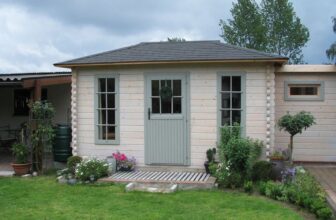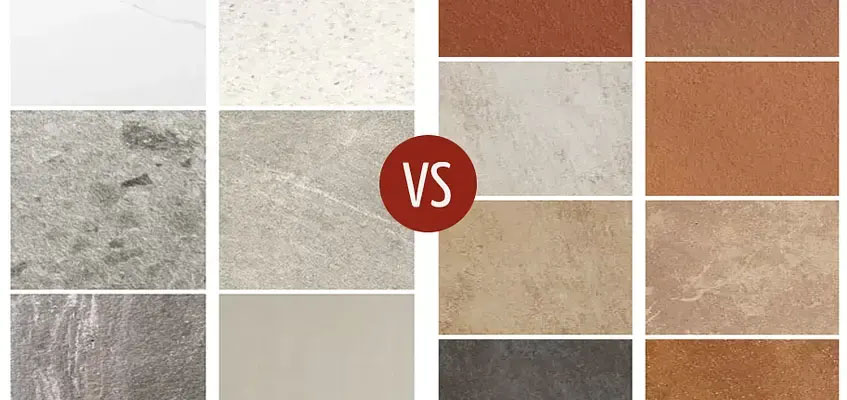
When it comes to choosing tiles for your home, the options can feel endless. Three popular materials dominate the market: ceramic, porcelain, and stone. Each has its unique qualities, aesthetics, and price points, making the decision process a bit of a juggling act.
Whether you’re tiling a backsplash, flooring, or a bathroom, understanding the differences and similarities between these materials will help you make an informed decision. So, grab a cup of coffee, and let’s dive into the colorful world of tiles!
Table of Contents
Ceramic Tiles
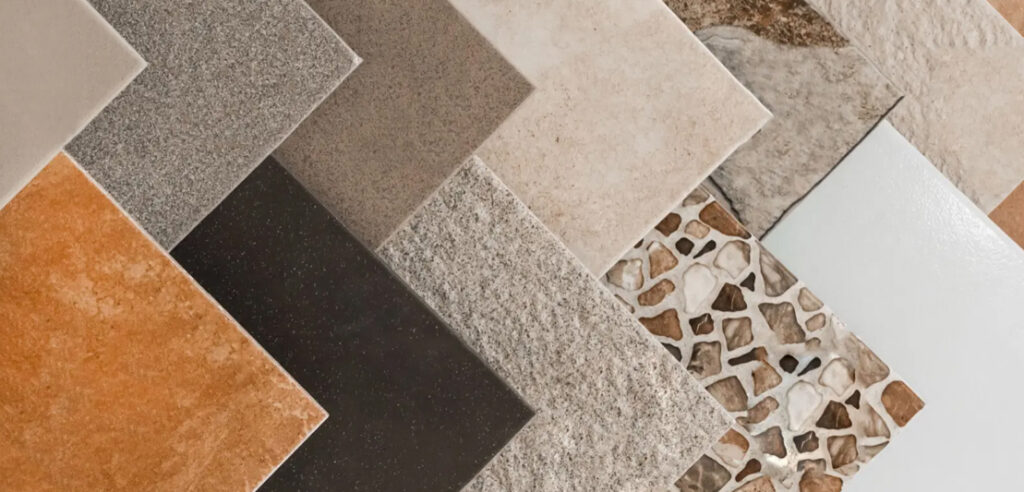
Source: gharjunction.com
Ceramic tiles have been a staple in homes for centuries, cherished for their versatility and wide range of colors and designs. Made from clay that’s formed into shapes and then baked in a kiln, ceramic tiles are generally softer and less dense compared to porcelain tiles. This makes them easier to cut and install, which can be particularly appealing if you’re a DIY enthusiast looking to save on installation costs. A tile installer can also be the perfect solution for you!
Ceramic is naturally porous, which means it can absorb water. Because of this, it’s often covered with a protective glaze, which not only makes the tiles moisture-resistant but also allows for a variety of finishes from glossy to matte. This glaze also acts as a hard armor, warding off stains and scratches, making ceramics a delightful choice for indoor applications like walls and low-traffic areas.
Porcelain Tiles: The Tough Contender
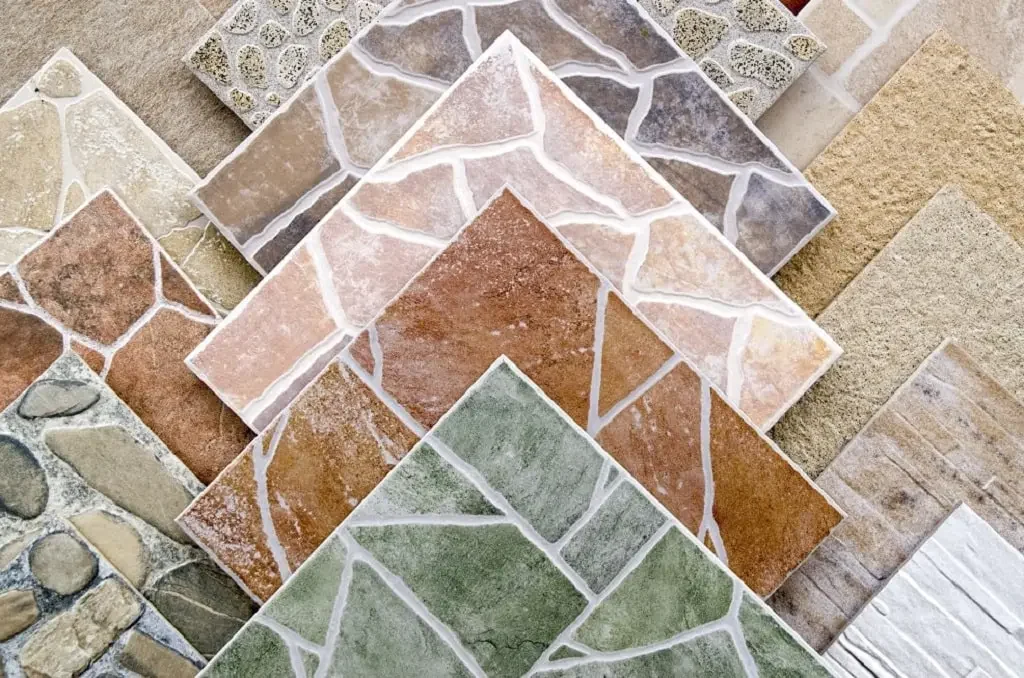
Source: stonecenters.com
Porcelain is a subtype of ceramic but with a few key differences that give it a badge of durability and versatility. Made from a more refined clay and fired at higher temperatures, porcelain tiles are denser and less porous than their ceramic counterparts. This inherent toughness makes them ideally suited for both indoor and outdoor use in any climate.
Porcelain’s density also makes it more challenging to cut and install, which might increase installation costs. However, this is balanced by its ability to handle heavy foot traffic, resist stains, scratches, and moisture. With its low water absorption rate, porcelain is an excellent choice for bathrooms, kitchens, and even as outdoor patio tiles.
The Natural Beauty of Stone Tiles
Moving away from man-made to the natural, stone tiles bring the outdoors inside, offering textures and patterns governed by Mother Nature herself. Options like marble, granite, limestone, and slate each bring their own unique vibe. Stone tiles are celebrated for their distinct and timeless elegance, but they do require more maintenance than ceramic or porcelain.
Stone’s porosity varies depending on the type. For instance, marble is softer and more susceptible to staining and scratching, while granite offers robust resistance to such annoyances. Sealing stone tiles is a must to protect their natural beauty from the rigors of daily life. Given their weight and the care needed in installation, professional fitting is recommended, which could add to the overall cost.
Matching Tiles to Your Lifestyle
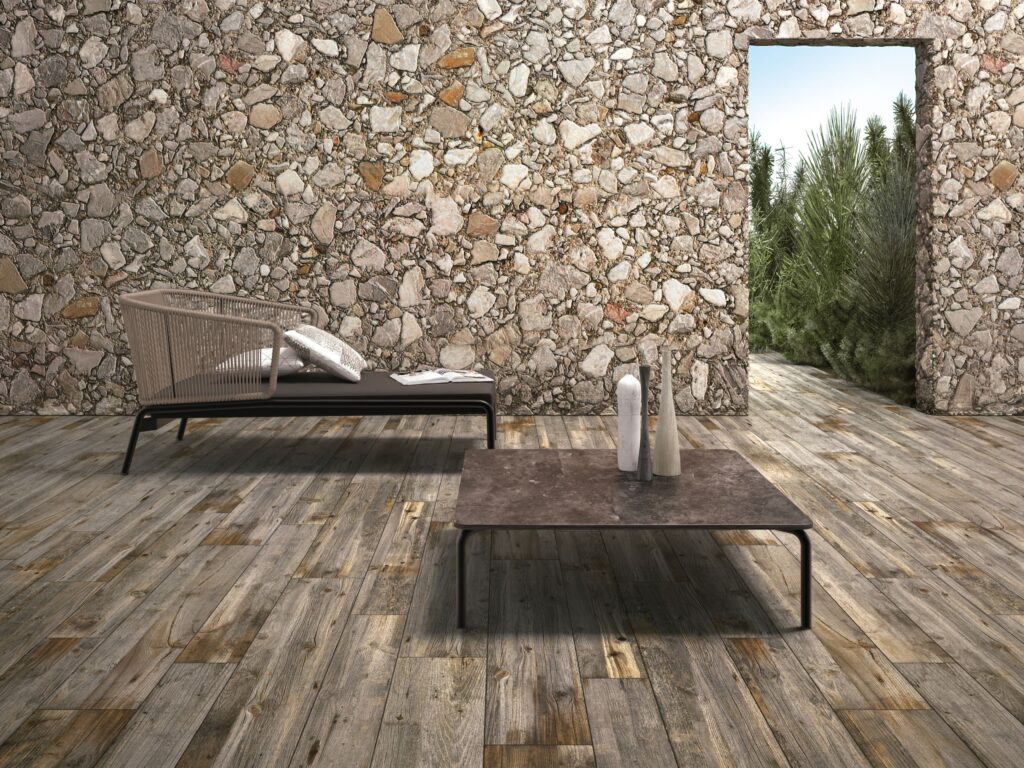
Source: indigenous.co.uk
Choosing between ceramic, porcelain, and stone isn’t just about appearance; it’s also about matching the tile to your lifestyle. If you have a busy home with kids and pets, porcelain might be your best bet due to its durability. For areas seldom trodden, like accent walls or backsplashes, ceramic offers a cost-effective and aesthetically diverse choice.
For those who value uniqueness and natural aesthetics, stone tiles, despite their higher maintenance and cost, may provide the character and style you desire. Considering how the tile will live with your daily activities will guide you in choosing the right material.
Consider the Total Cost
While the upfront cost of tiles can vary widely, the total cost involves more than just the price per square foot. Installation costs for porcelain and stone tiles are typically higher than for ceramic due to their hardness and weight, which require specialized tools and skills for cutting and laying. Maintenance should also be factored into the cost equation, especially for stone tiles, which may need regular sealing.
Efficiency in heating is another cost-related factor. Porcelain, being denser, tends to hold heat better than ceramic, making it a favorable option for floors with underfloor heating systems. Stone also has excellent heat retention properties, adding to its allure in colder climates.
Styling Your Space
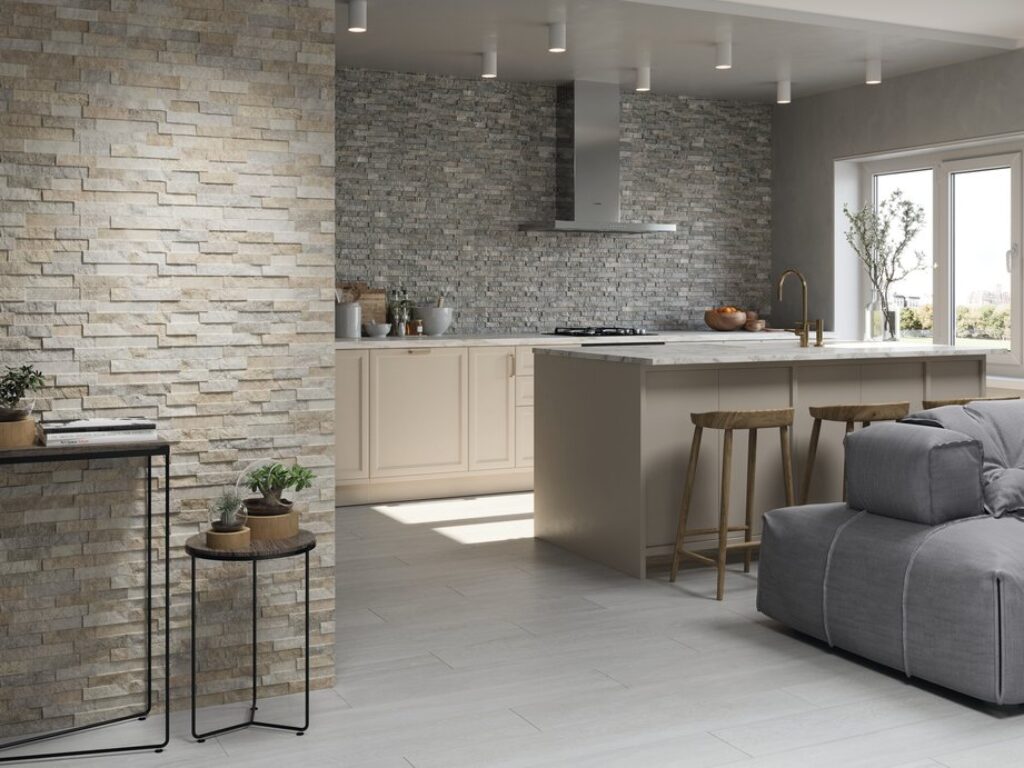
Source: elmolino.es
Lastly, the fun part – styling! Ceramic tiles offer a vast array of designs, colors, and textures, allowing for personal expression in less trafficked areas. Porcelain’s color usually runs through the entire tile, which helps in hiding chips or scratches, making it practical for both floors and walls in busy areas.
Stone tiles offer a natural, earthy vibe that can range from rustic to ultra-modern, depending on the type and finish of the stone. They can add significant resale value to your home, thanks to their luxurious appeal.
Planning for Installation
As you narrow down your choice between ceramic, porcelain, and stone, the topic of installation should be part of your decision-making process. Each material presents unique challenges that can affect the ease, time, and cost of installation. For instance, ceramic tiles, being softer and easier to cut, can be a dream for DIY projects, offering room for experimentation and personal involvement in the home renovation process.
Porcelain, on the other hand, demands precision due to its hardness and low porosity. Cutting porcelain tiles requires a wet saw with a diamond blade, and precise measurements are crucial to avoid material waste and ensure a clean finish. Professional installation might seem like an added expense, but it can actually be cost-effective in the long run by minimizing errors and waste.
Final Thoughts
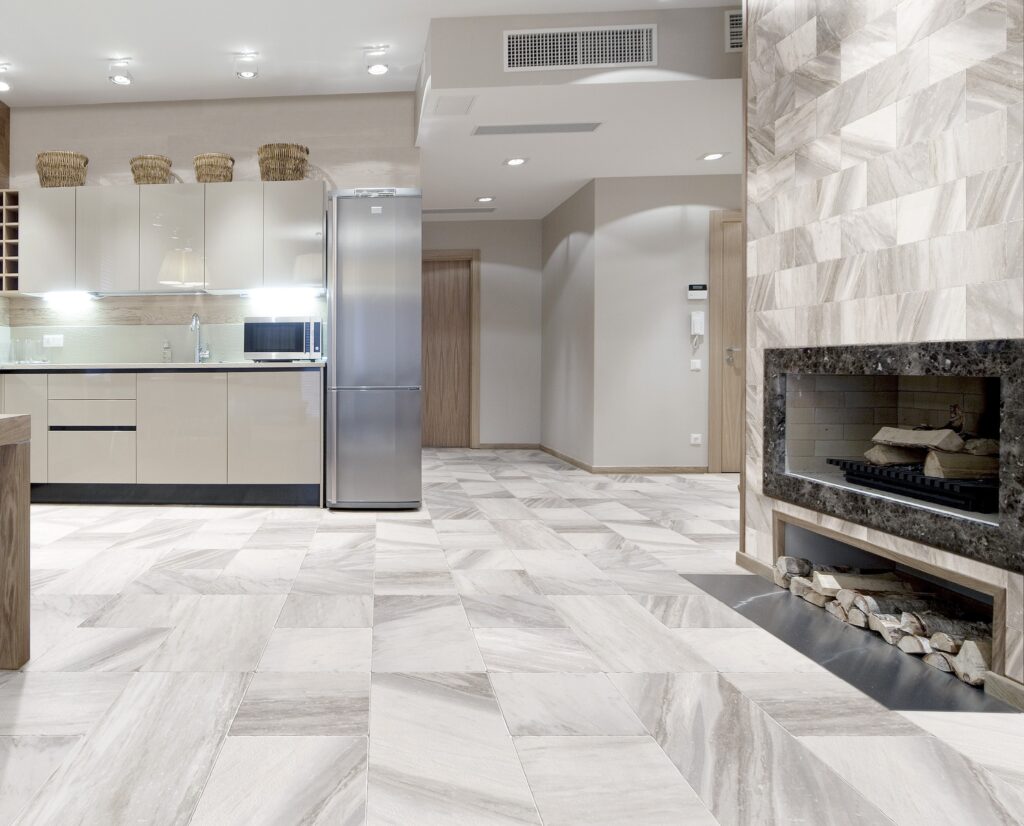
Source: lowes.com
Choosing between ceramic, porcelain, and stone tiles involves weighing aesthetics against functionality and cost. Each material offers unique benefits, and the best choice ultimately depends on your specific needs, tastes, and lifestyle.
By considering the environment the tiles will inhabit, along with their practicality and maintenance needs, you’ll be well-equipped to make a choice that you’ll be happy with for years to come. Whether it’s the practical reliability of porcelain, the creative flexibility of ceramic, or the natural allure of stone, your new tiles will significantly impact the look and feel of your home.



